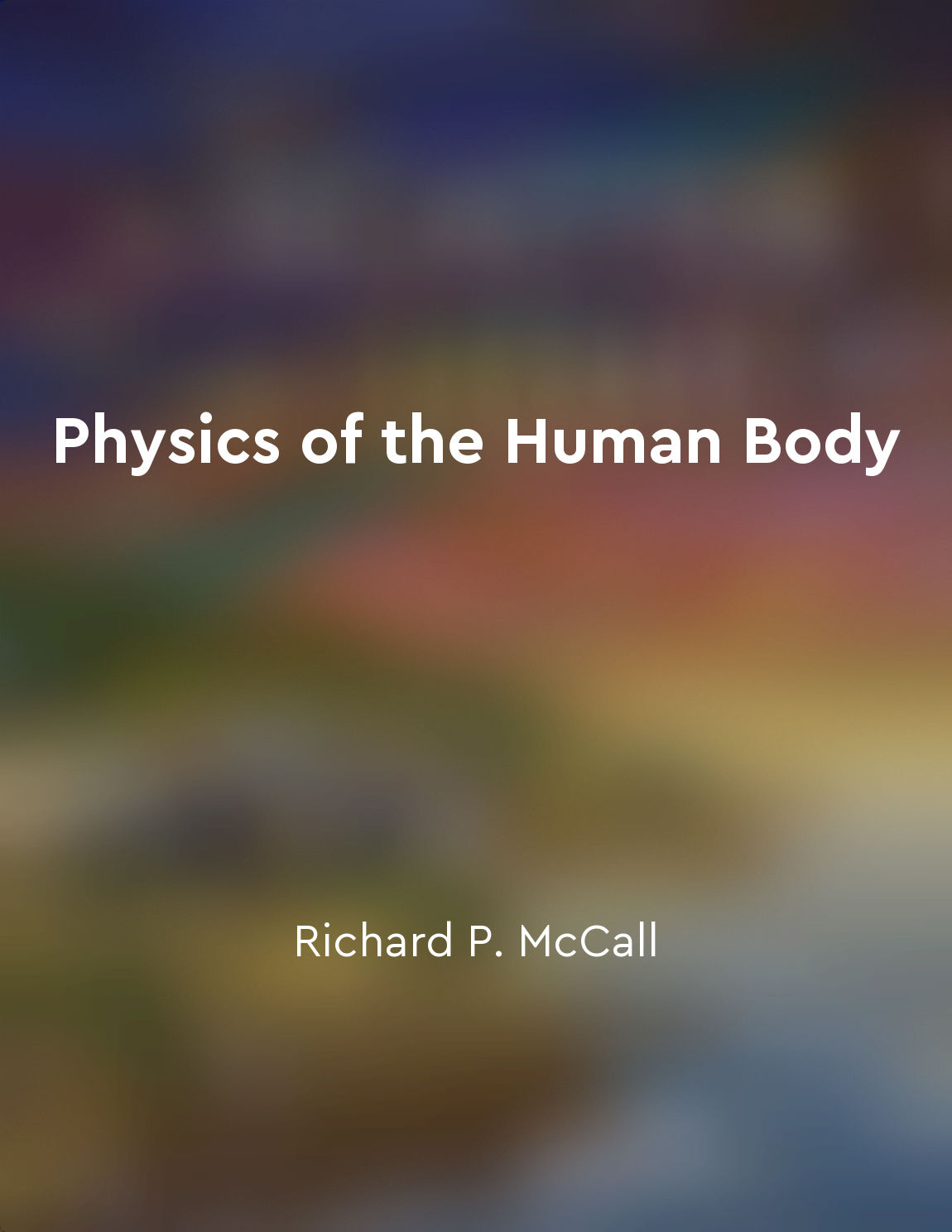Bioelectricity plays a role in nerve and muscle function from "summary" of Physics of the Human Body by Richard P. McCall
Bioelectricity refers to the electrical signals that are generated and transmitted within living organisms. In the human body, bioelectricity plays a crucial role in the function of nerves and muscles. Nerves are responsible for transmitting electrical signals from the brain to various parts of the body, allowing for communication between different systems and organs. These signals enable us to perform essential functions such as movement, sensation, and coordination. Muscles, on the other hand, are the primary effectors of movement in the body. Bioelectricity is essential for muscle function as it allows for the transmission of signals from the nerves to the muscles, triggering muscle contractions. This process is vital for activities such as walking, talking, and breathing. Without bioelectricity, the communication between nerves and muscles would be disrupted, leading to impaired movement and coordination. The generation of bioelectricity in the body is mainly attributed to the flow of ions across cell membranes. Nerve cells, or neurons, have specialized structures called axons that conduct electrical impulses. These impulses are generated by the movement of charged ions, such as sodium and potassium, across the cell membrane. Similarly, muscle cells contain proteins that allow for the flow of ions, enabling the contraction and relaxation of muscles. The bioelectric signals produced by nerve cells travel along the length of the axon until they reach the muscle cells, where they trigger the release of neurotransmitters that stimulate muscle contraction. This coordinated effort between nerves and muscles is essential for the execution of even the simplest movements. The precise control of bioelectricity in the body ensures that nerve and muscle function is maintained, allowing us to perform daily activities with ease.- Bioelectricity serves as the medium through which communication occurs between nerves and muscles in the human body. It is the driving force behind essential functions such as movement, sensation, and coordination. Understanding the role of bioelectricity in nerve and muscle function is crucial for appreciating the intricate mechanisms that govern the human body.
Similar Posts
Yoga can improve brain flexibility
Norman Doidge introduces the idea that practicing yoga can enhance flexibility in the brain. He explains that when we engage in...
Small repetitive actions lead to profound change
In talent hotbeds around the world, from a tiny music school in Dallas to a soccer field in Brazil, the same pattern emerges: s...

Developing a mindful awareness of our body can enhance our vagal tone
When we bring our attention to our body and truly listen to its signals, we are engaging in a practice of mindfulness. This min...

Rotational motion is key to many body movements
Rotational motion plays a crucial role in numerous body movements. When we think about the human body in motion, it is easy to ...
Practice mindfulness for mental wellbeing
One key practice for enhancing mental wellbeing is mindfulness. Mindfulness involves paying full attention to the present momen...
The brain is interconnected with the rest of the body
The brain does not function in isolation; it is tightly linked with the rest of the body in a complex network of communication....

